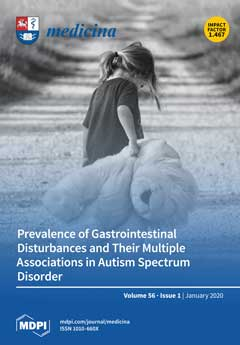Background and Objectives: Inflammation is considered a risk factor for venous thromboembolism. The association between inflammatory markers and the severity of acute pulmonary embolism (APE) has not been explored.
Methods: We studied the association between two crude markers of inflammation, serum albumin, and red cell distribution width (RDW) and massive versus non-massive APE.
Results: Among 552 consecutive cases of CT-angiogram-confirmed APE, a total of 46 cases (8.3%) had massive APE. Despite similar demographics and comorbidities, patients with massive APE had higher frequency of acute kidney injury (
P = 0.005), higher lactic acid (
P = 0.011), higher troponin (
P = 0.001), higher BNP (
P < 0.001), higher frequency of RV dilation (
P = 0.017) and hypokinesis (
P = 0.003), and higher in-hospital mortality (15.2% vs. 2%,
P < 0.001). Patients with massive APE had significantly lower albumin level (median (IQR): 2.8 (2.2, 3.0) vs. 3.2 (2.8, 3.6) gm/dL,
P < 0.001) and higher RDW (median (IQR): 14.7 (13.8, 17.1) vs. 14.2 (13.3, 15.6),
P = 0.006) compared with non-massive APE. ROC curves showed that albumin and RDW had an AUC of 0.750 (
P < 0.001) and 0.621 (
P = 0.006) in predicting a massive APE, respectively. The optimal cutoff values for albumin and RDW that had the highest combined sensitivity and specificity for predicting APE was ≤3 gm/dL and >14, for albumin and RDW, respectively. Restricted cubic splines showed a significant association between albumin (
P = 0.0002) and RDW (
P = 0.0446) and the occurrence of massive APE. After adjustment for patients’ age, body mass index, white blood cell count, the requirement of antibiotics during hospitalization, diabetes, RDW, and peak creatinine, serum albumin was independently associated with massive APE (OR 0.234, 95% CI 0.129–0.4242,
P < 0.001).
Conclusion: low serum albumin is associated with massive APE. This association is likely a proxy for higher inflammatory state in massive compared with non-massive APE.
Full article






